 | Stjepan Večković on the photo is a founder of the Croatian Bagpipe Orchestra. Bagpipes are usually associated to Ireland and Scotland, but Croatian bagpipe tradition is much older. Recently an International Bagpipe Festival has been organized in the village of Mihovljan near Zagreb. According to Mr. Večković, there is no country in the world that could compete Croatia in the variety of traditional national musical instruments. |
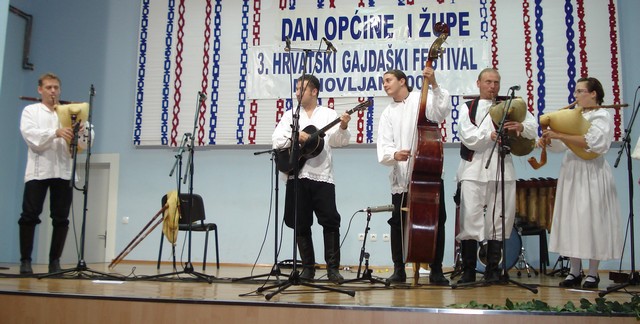
| Croatian names for bagpipes are gajde, mih, dude or diple Hrvatski gajdaški festival je međunarodni festival tradicijskih glazbala u organizaciji Centra za tradicijska glazbala Hrvatske, a prvi put je održan 20. listopada 2007. u mjestu Mihovljan u Hrvatskom zagorju. Na 1. Hrvatskom gajdaškom festivalu je sudjelovalo 29 izvođača, svirača raznih tradicijskih glazbala iz Hrvatske, te gosti iz inozemstva. Program je bio bogat i raznovrstan te su posjetitelji, osim gajdi, mogli čuti i dude, ljericu, samicu, slovačke gajde, fujaru, bugarske gajde, istarski mih i šurle, didgeredoo, cimbal, jedinku, okarinu, pjevanje uz tradicijska glazbala, te vrlo interesantne glazbene sastave. U dodatnom programu je nastupila Lidija Bajuk. Centar za tradicijska glazbala Hrvatske osniva prvu hrvatsku GAJDAŠKU AKADEMIJU na kojoj će polaznici imati prilike naučiti sve o gajdama i srodnim glazbalima na ovim prostorima. Hrvatska je izuzetno bogata glazbalima tipa gajdi (glazbala s mješinom), te će poseban naglasak biti na učenju tehnika sviranja slavonskih i baranjskih gajdi, podravskih i bilogorskih duda, te nekih vrsta mihova i dipli (istarski, dalmatinski, hercegovački mih). Ovisno o interesu postojat će mogućnost učenja sviranja gajdi i drugih europskih naroda (makedonske gajde, bugarske, španjolske, slovačke, irske, škotske...). Osim tehnika sviranja, učit će se osnove glazbe (za polaznike koji ne čitaju notno pismo), zatim održavanje i naštimavanje gajdi, te izrada nekih dijelova. Gajdaška akademija će započeti s radom u Zagrebu početkom 2009. godine uvodnim vikend seminarom. Broj polaznika će biti ograničen na maksimalno 10 po terminu. Voditelji akademije su Stjepan Večković i Vjekoslav Martinić. www.gajde.com |

Zvjezdan Draganić, Iva Cvrtila, Anja Šoštarić and Matea Kovačević from the Croatian Bagpipe Orchestra.
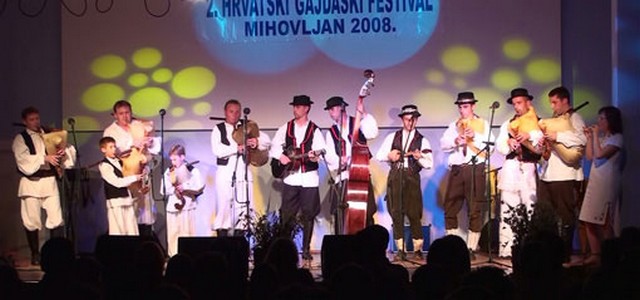 Playing at the 2nd Croatian Bagpipe Festival in Mihovljan near Zagreb in 2008. Note young bagpipe forces on the left.  Croatian musical heritage is simply unbeleivable: dvojnice, roženice, okarine, gajde, dude, diple, ljerice, samice, etc. For more details see www.gajde.com . 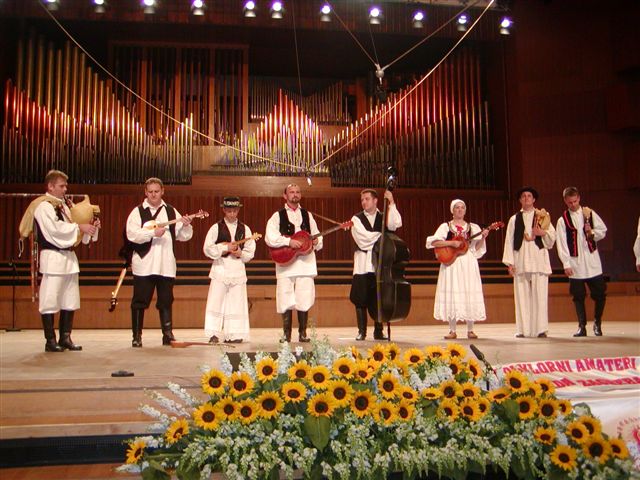 Playing in the Vatroslav Lisinski Concert Hall in Croatia's capital Zagreb.  Logo of the Croatian Bagpipe Orchestra.  Mihael Večković, young bagpipe player. Many thanks to his father Stjepan for permission to use the above five photos. |
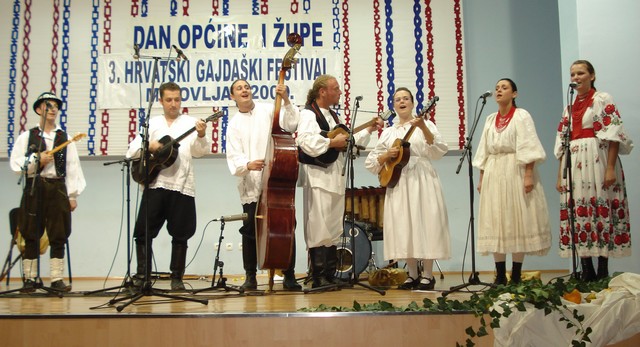
Antun Božić, Marko First, Tomislav Gec, Zvjezdan Draganić, Iva Cvrtila, Anja Šoštarić and Matea Kovačević, a part of Croatian Bagpipe Orchestra. The orchestra now comprises 25 players from various parts of Croatia.
|
Croatian Bagpipe Orchestra: S one strane Dunava (From the other side of Danube)
Croatian Bagpipe Orchestra - Hrvatski gajdaški orkestar (Gajdaško i Vilinsko kolo)
|
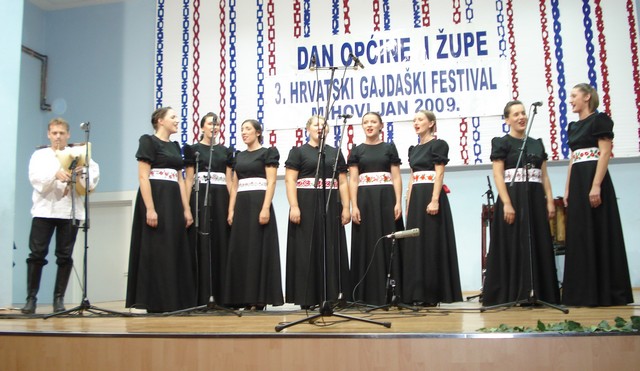
Đurđevičice choir from the town of Đurđevac singing beutiful, tender songs from Croatian north, accompanied with Stjepan Večković on the bagpipe.

Tomislav Livaja, a young bagpipe player from the village of Slakovci near the town of Vinkovci in Slavonia on the north of Croatia.

Hernando Zamora, Nelson Peruzo and Carlos Fernando Balanta, guests of the Festival from Bogota, Columbia.
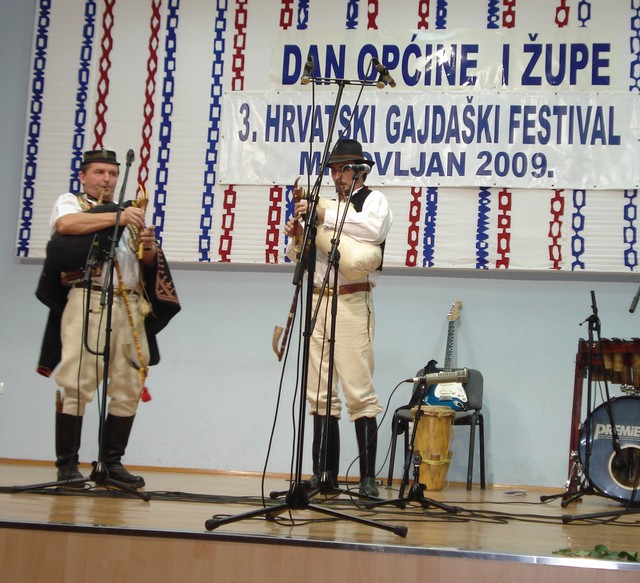
Guests of the Festival arriving from Slovakia: Lubomir Tatarka and Andrej Babjar with their bagpipes.
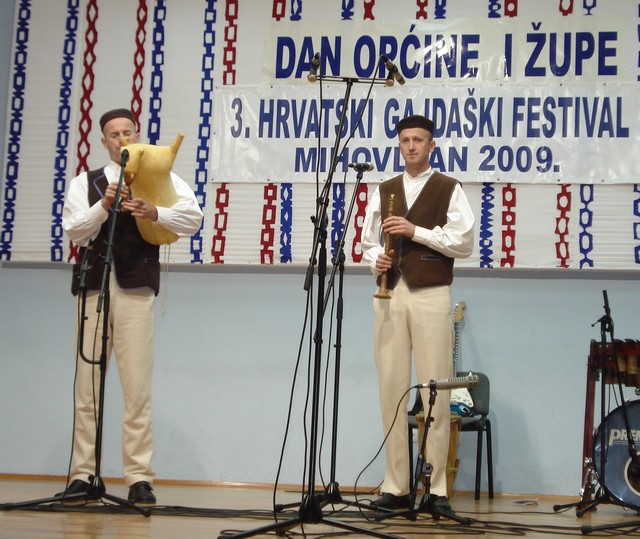
Mladen and Klaudio Radolović from the town of Vodnjan, Istrian peninsula on the south-west of Croatia, playing roženice and mih (bagpipe).
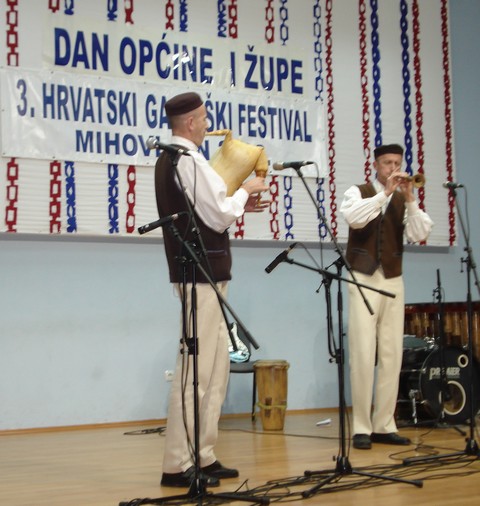
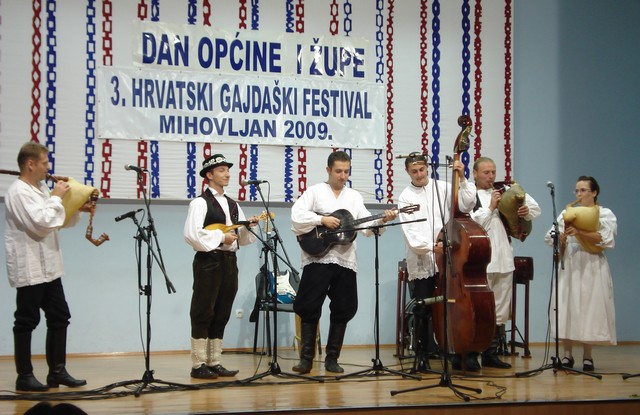
Fantastic sound of bagpipes and tamburitzas.

Ivan Čupanov from Bulgaria playing bagpipe.
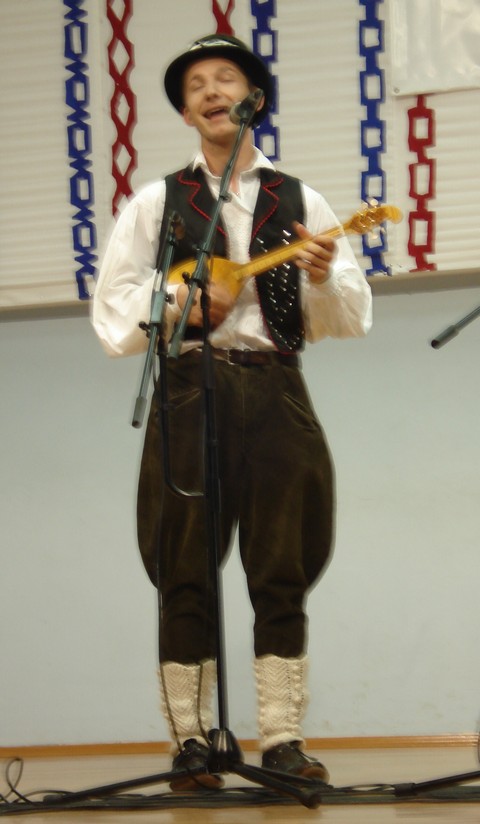
Mr. Antun Božić from the village of Antin in Slavonia, a region on the north of Croatia, playing samica, a lovely four string instrument. Mr. Božić has been invited to participate at a Folklore Festival in Moscow in September 2009.
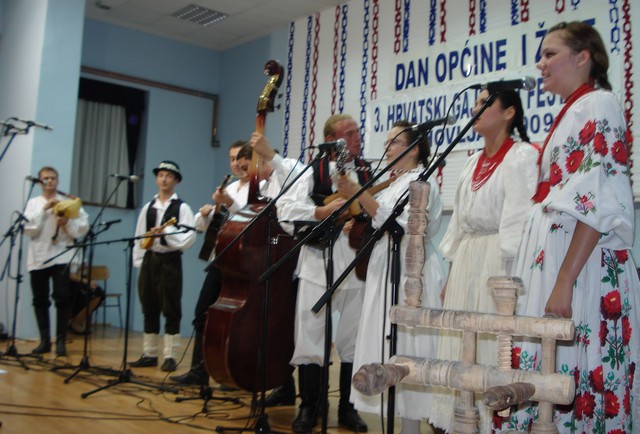
In the mood...
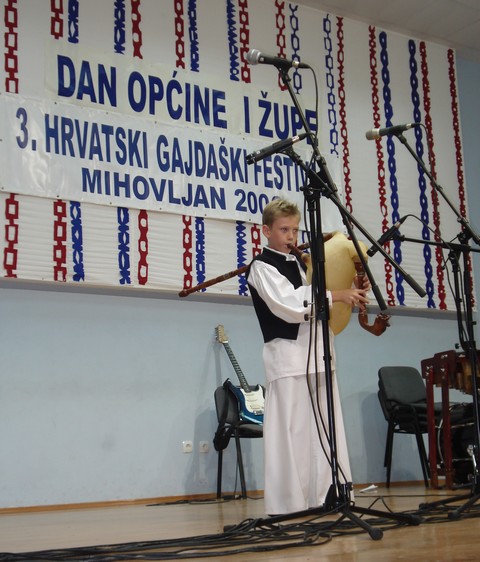
Mihael Večković, the youngest bagpipe player at the Festival.
Please, go to the next page below.
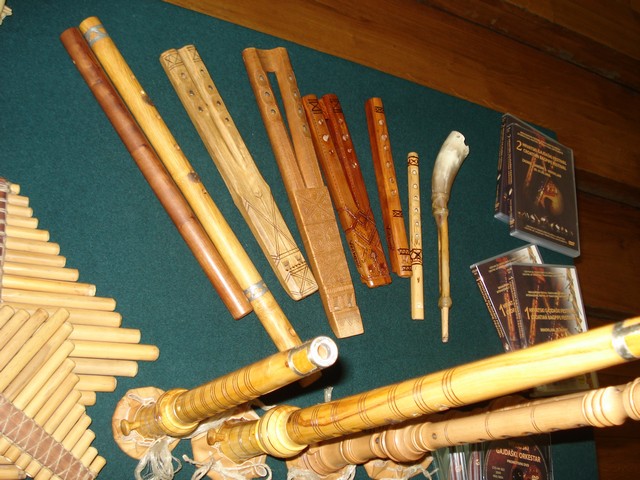



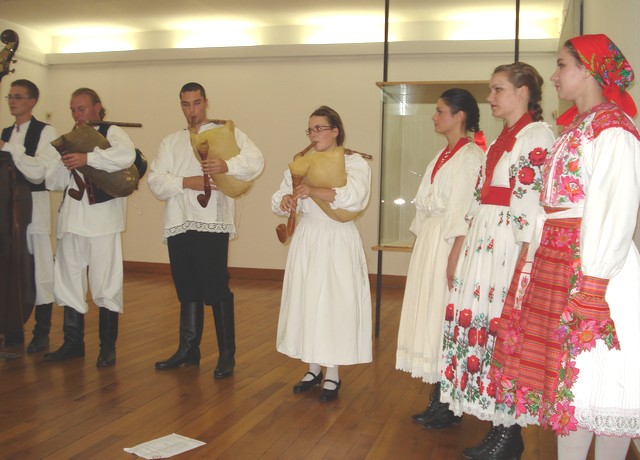
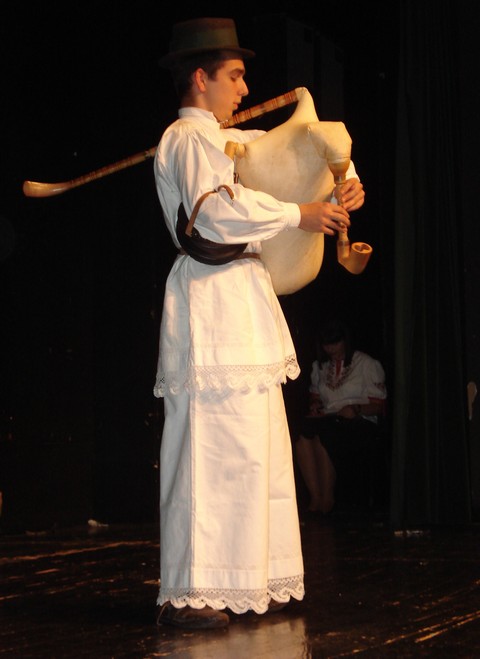
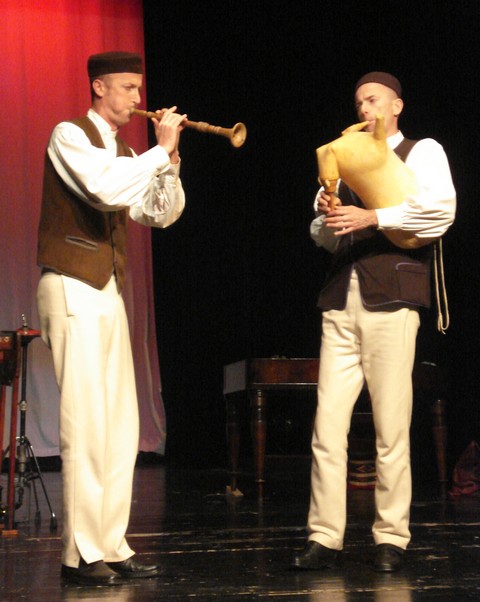
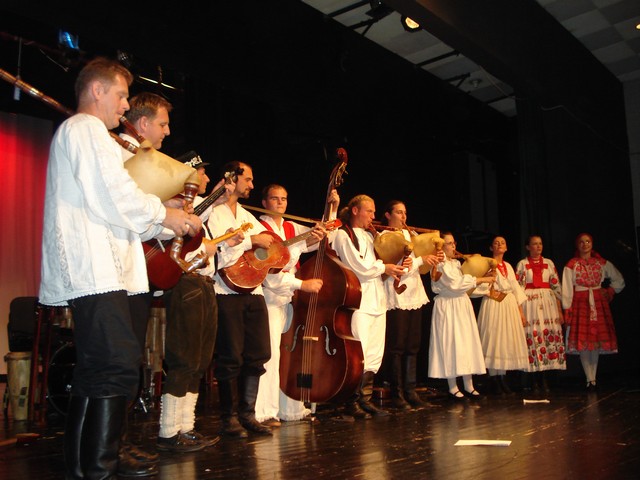
| Some other sources dealing with Croatian bagpipe tradition
Croatian Diple Music |
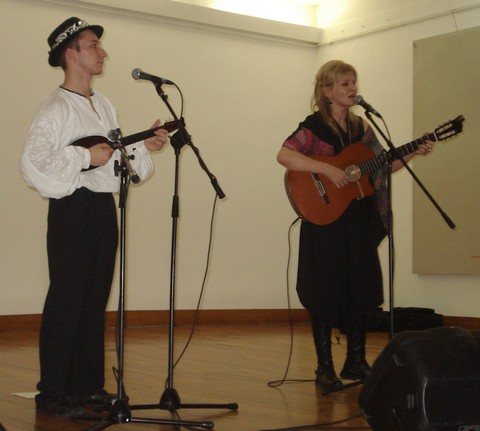

Formated for CROWN by prof.dr. Darko Žubrinić
Distributed by www.Croatia.org . This message is intended for Croatian Associations/Institutions and their Friends in Croatia and in the World. The opinions/articles expressed on this list do not reflect personal opinions of the moderator. If the reader of this message is not the intended recipient, please delete or destroy all copies of this communication and please, let us know!